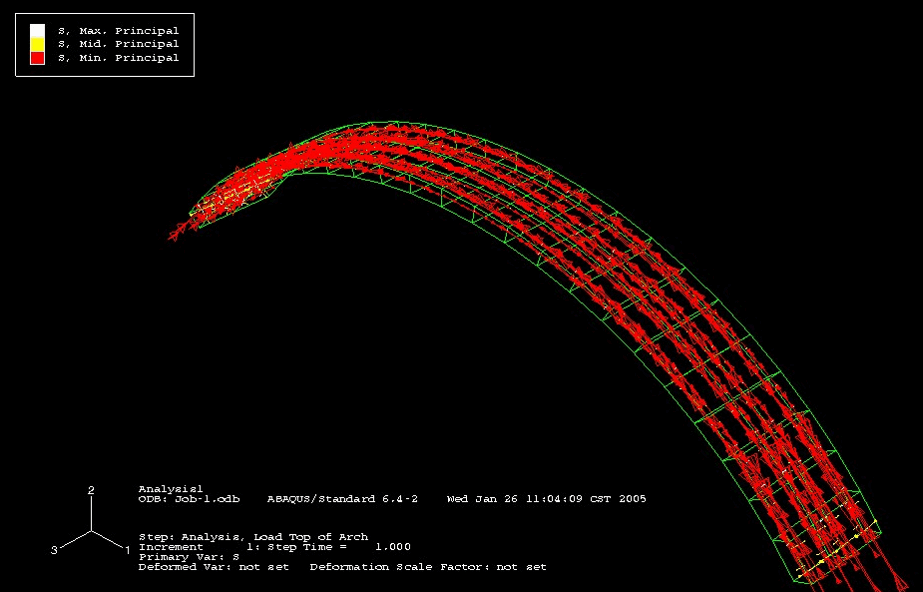J.M. Nichols
Assistant Professor, Dept of Construction Science , Texas A&M University, TAMU-3137 College Station, TX, 77843-3137 jm-nichols@tamu.edu
ABSTRACT
The bridges known from the Welsh as Pont-Y-Prydd were built by Mr Edwards in 1755 for wagon traffic. The first bridge was washed away in a flood, the reconstructed bridge failed during construction when the centring was removed, whilst standing successfully at the third attempt with lighter haunches. Baker wrote that the work was constructed by an un-educated mason, although the Welsh consider Mr Edwards one of their early architects. The construction is unusual in the steepness of the roadway, the relatively thin arch elements and the circular elements used to reduce the mass of the haunches in the third bridge. The paper presents a finite element analysis of the second Pont-Y-Prydd using the data presented by Baker and other researchers. The finite element analysis using Abacus on the TAMU supercomputer provided the data to confirm the deflected shape of the completed bridge. A comparison of the results and a commentary is provided between the collapse of the second bridge and the success of the third bridge. The third bridge still stands.
KEYWORDS: historic masonry arches, masonry analysis, finite element analysis
5a-3



